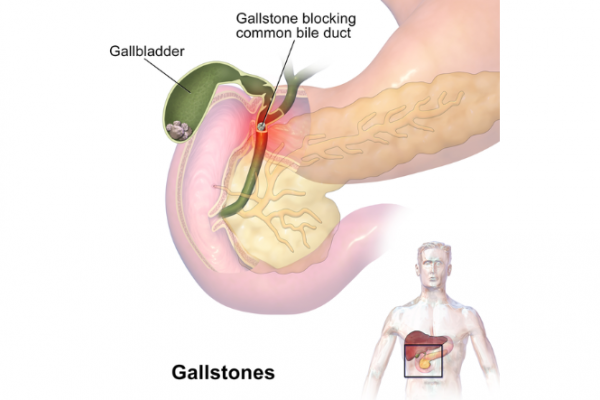
Image credit: Blausen.com via wikimedia commons

Low or no data? Visit zero.govt.nz, scroll down the page then click on our logo to return to our site and browse for free.


Image credit: Blausen.com via wikimedia commons
Gallstone removal surgery is a common procedure and you can live a healthy life without a gallbladder. Once it's been removed the bile makes it way out of your body and comes out in your poo. Sometimes the bile ducts get larger and take on the role of storing bile.
Before you have gallbladder surgery, your healthcare team will do some tests (eg, blood tests) and check that the surgery is right for you. They will also decide if you need keyhole or open surgery. You will be told what you need to do to prepare for the surgery including whether you need to stop eating and drinking before your operation and whether you need to stop taking any of your medicines.
Make sure you have someone who can take you home after your surgery.
Gallbladder removal surgery is done by a surgeon in hospital. There are 2 main ways a surgeon can remove the gallbladder. For both procedures, you will be given a general anaesthetic (a medicine that puts you to sleep) so you don’t feel anything while the procedure is being done.
The video below is about laparoscopic surgery for gallbladder removal.
Your surgeon will give you advice on what to do while you recover. Usually, most people recover quickly from keyhole surgery and will usually be able to leave the hospital on the same day or the following day. It's best to rest for the next 2 weeks but you may need to rest for longer if you have a manual job. Do gentle exercise but don’t push yourself.
If you have open surgery, you will need to stay in hospital for a few days and it can take 2 months to get back to normal. Have a friend, whānau member or neighbour check up on you while you are recovering.
Possible short-term side effects include:
These should get better in a few days. You could take paracetamol if needed for the pain. If you are very uncomfortable or these symptoms continue for more than a few days contact your healthcare provider.
It is best to have a healthy balanced diet after your surgery. If you have diarrhoea (runny poo) try eating high fibre foods such as vegetables and brown rice to help firm up your poo. Your gallbladder is not essential for healthy digestion so most people find they don't have any ongoing digestive problems following their gallbladder removal.
Gallbladder removal surgery is usually a safe procedure but as with any procedure there are risks. Possible risks include:
Contact your doctor as soon as you can or call Heathline for advice (0800 611 116) if you experience any of the following symptoms after your operation:
The following links provide further information about gallbladder surgery. Be aware that websites from other countries may have information that differs from New Zealand recommendations.
Gallbladder removal(external link) NHS, UK
Laparoscopic cholecystectomy(external link) HealthDirect, Australia
Credits: Healthify editorial team. Healthify is brought to you by Health Navigator Charitable Trust.
Page last updated: